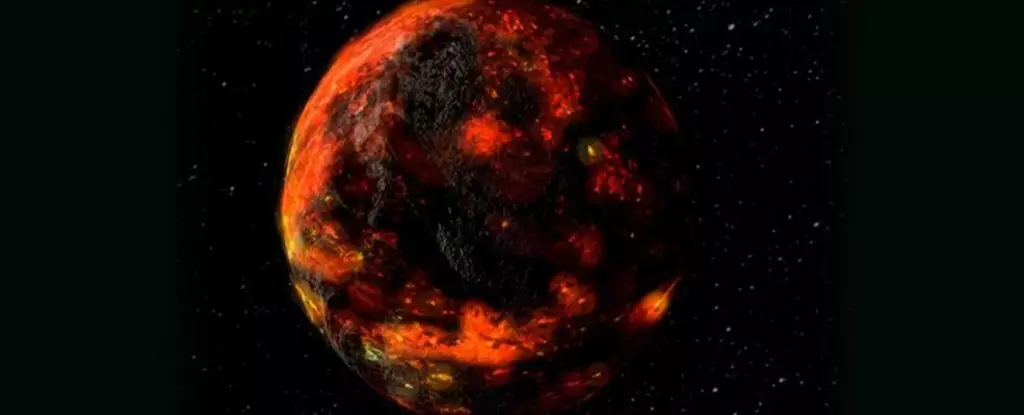The Moon remains one of the most captivating subjects in celestial studies, contributing significantly to our understanding of the Solar System’s history. Recent advancements, particularly measurements of lunar rock samples collected during the Apollo missions, have illuminated fascinating aspects of the Moon’s early formation and evolution. Researchers led by University of Chicago scientist Nicolas Dauphas have concluded that the Moon began solidifying approximately 4.43 billion years ago, a critical era coinciding with the very beginnings of Earth’s transformation into a habitable environment. This article delves into these findings, exploring their implications for lunar history and the broader context of planetary evolution.
The prevailing model of the Moon’s formation posits that it was born from a catastrophic collision between the Earth and a Mars-sized body named Theia. This cataclysmic event, occurring roughly 60 million years after the Solar System’s inception, flung molten debris into orbit around Earth, which eventually coalesced to form the Moon. Initially, this proto-Moon was an immense molten sphere that underwent a gradual cooling process.
As the surface of the Moon crystallized, it separated into distinct layers, leading to the formation of the lunar magma ocean that dominated its early geological history. According to Dauphas and his team, about 99% of this magma ocean solidified, leaving behind a unique residual layer rich in potassium, rare earth elements, and phosphorus, collectively known as KREEP. This term not only embodies the elements it contains but also symbolizes an important epoch in lunar evolution, representing the moon’s complex geological identity.
KREEP is essential for understanding the Moon’s geologic past. The researchers analyzed these KREEP deposits, which originated roughly 140 million years after the formation of the Solar System, a crucial time in lunar history that aligns with the cooling of the Moon’s surface. Such analysis involved examining the ratios of the element lutetium, which decays into hafnium, in lunar rock samples obtained during the Apollo missions. This decay process serves as a geological clock, aiding scientists in dating various rock formations precisely by comparing them with other ancient materials, like meteorites.
One of the team’s notable discoveries was that the ratio of lutetium to hafnium in the Moon’s KREEP is significantly lower than that observed in other bodies formed at similar times. This finding underscores how unique the Moon’s development trajectory has been compared to its celestial counterparts. It highlights that while the Moon was forming, it was simultaneously bombarded by leftover planetary bodies, leading to a complex interplay of geological and cosmic forces.
Despite the advancements illustrated by this research, the Moon’s history is far from fully understood. The investigation into lunar history is ongoing, with hopes that future missions, such as NASA’s Artemis program and China’s Chang’e series, will yield more samples from unexplored regions like the South Pole-Aitken basin. This area is of particular interest due to its potential to contain additional KREEP deposits, providing essential insights into the distribution of this layer across the lunar landscape and its implications for lunar geology.
As scientists continue to study these ancient rocks, they endeavor to piece together the timeline of the Moon’s cooling phases and the genesis of various rock types, including the mare basalts. The mare, formed from post-impact lava flows, constitutes less than 20% of the Moon’s surface yet holds clues to understanding both lunar and terrestrial history.
Understanding the Moon’s evolution is crucial not only for lunar science but also for deciphering Earth’s early history. The colossal impact that led to the Moon’s creation was likely one of the final major disturbances Earth experienced. This event may signify the transition of our planet into a stable environment capable of supporting life. Consequently, the timeline established for the Moon’s cooling and subsequent geological activity provides vital context for the evolution of Earth, informing theories about the conditions that ultimately allowed life to flourish.
Dauphas emphasizes the importance of these findings, noting their alignment with existing evidence. As researchers prepare for upcoming missions, these insights lay the groundwork for a deeper understanding of the Moon and its resonances with Earth’s story, shaping future explorations of our celestial neighbor. The connection between lunar research and our planet’s habitability paints a remarkable picture of how two bodies, interconnected in their formation, shape our narrative in the cosmos.


Leave a Reply